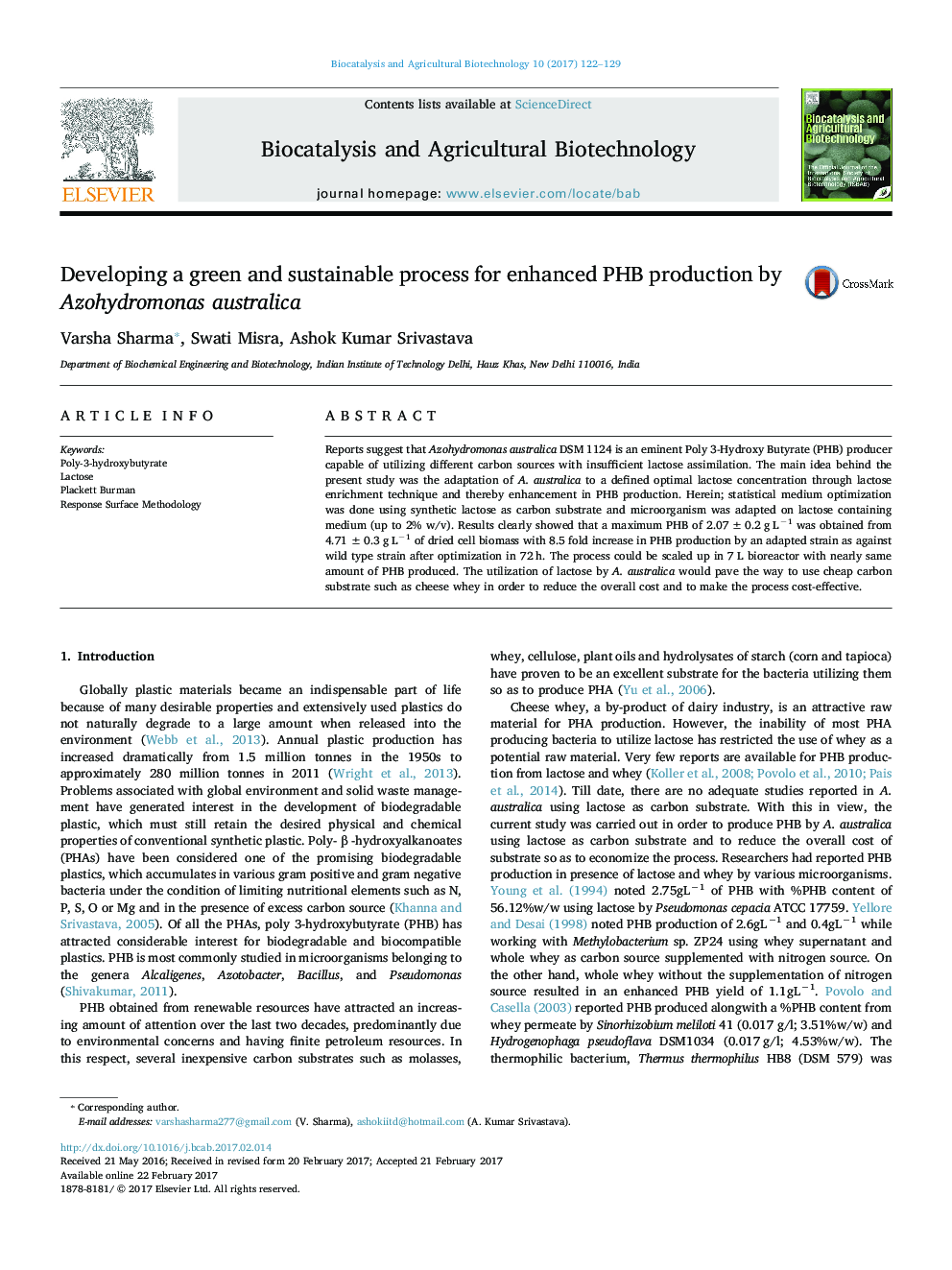| Article ID | Journal | Published Year | Pages | File Type |
|---|---|---|---|---|
| 5520463 | Biocatalysis and Agricultural Biotechnology | 2017 | 8 Pages |
â¢Azohydromonas australica DSM 1124, eminent PHB producer could assimilate lactose.â¢Microbial adaptation through lactose enrichment technique (2% w/v).â¢Statistical optimization by adapted strain yielded 8.5 fold increase in PHB production.â¢Process scaled upto 7 L bioreactor.
Reports suggest that Azohydromonas australica DSM 1124 is an eminent Poly 3-Hydroxy Butyrate (PHB) producer capable of utilizing different carbon sources with insufficient lactose assimilation. The main idea behind the present study was the adaptation of A. australica to a defined optimal lactose concentration through lactose enrichment technique and thereby enhancement in PHB production. Herein; statistical medium optimization was done using synthetic lactose as carbon substrate and microorganism was adapted on lactose containing medium (up to 2% w/v). Results clearly showed that a maximum PHB of 2.07±0.2 g Lâ1 was obtained from 4.71±0.3 g Lâ1 of dried cell biomass with 8.5 fold increase in PHB production by an adapted strain as against wild type strain after optimization in 72 h. The process could be scaled up in 7 L bioreactor with nearly same amount of PHB produced. The utilization of lactose by A. australica would pave the way to use cheap carbon substrate such as cheese whey in order to reduce the overall cost and to make the process cost-effective.
